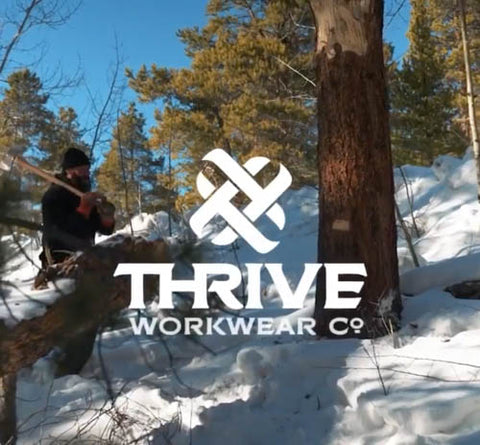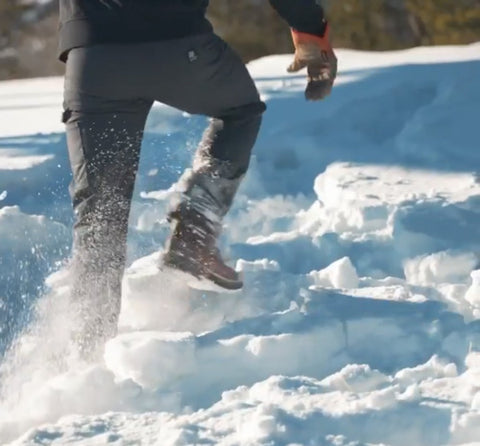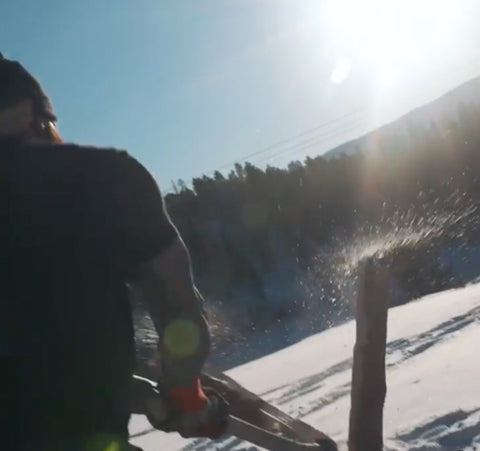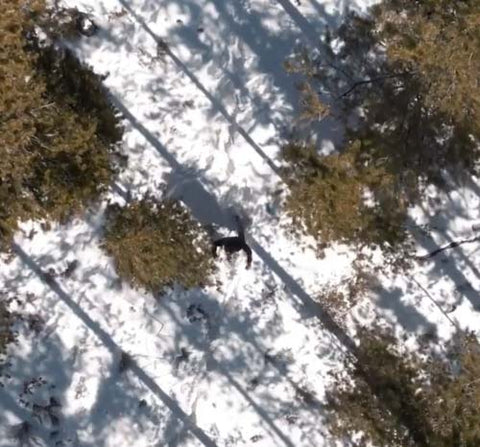Chilled to Thrill: Crafting Cold Weather Workwear for All Trades
When it comes to working in cold weather, ordinary clothing simply won't cut it.
When it comes to working in cold weather, ordinary clothing simply won't cut it.

Picture this: It's a bone-chilling winter morning, and you find yourself standing at the worksite, hands trembling, teeth chattering, and body shivering. The freezing temperatures seem to seep through every layer of clothing, leaving you desperately longing for warmth and comfort. You realize that battling the cold is not just a matter of discomfort but a challenge that affects your productivity and safety.

When it comes to selecting workwear for cold weather, there are several key features that you should keep in mind. These features are designed to ensure maximum comfort, protection, and durability, allowing you to work efficiently even in freezing temperatures. Let's explore these essential aspects of cold weather workwear:
Insulation is one of the most important features to consider in cold weather workwear. It helps to trap heat close to the body, keeping you warm and comfortable throughout the day. If you’re on the other end of the spectrum, check our flame-resistant apparel. Look for workwear that offers effective insulation without adding bulk, allowing for ease of movement while providing optimal warmth.
In addition to insulation, breathability is crucial in cold weather workwear. It allows moisture to escape from the body, preventing sweat buildup and keeping you dry. Look for fabrics and designs that offer a balance between insulation and breathability, ensuring comfort even during physically demanding tasks.
Working in cold weather often means dealing with wet conditions, whether it's snow, rain, or standing water. Choosing workwear with water-resistant properties helps to keep you dry and protected from moisture. Look for garments with durable water repellent (DWR) coatings or waterproof membranes to ensure maximum water resistance.
Wind can significantly reduce the perceived temperature and make working in cold weather even more challenging. Invest in workwear with windproofing features, such as wind-resistant fabrics and adjustable closures, to shield yourself from the chilling effects of strong winds.
Cold weather work pants with knee pad inserts need to withstand the rigors of the job while providing long-lasting performance. Look for high-quality materials and robust construction to ensure durability in demanding environments. Reinforced stitching, heavy-duty zippers, and abrasion-resistant fabrics are all indicators of durable workwear.
Look out for features like intelligent insulation, moisture-wicking fabrics, and battery-powered heating elements.
By prioritizing these key features, you can select the right cold weather workwear that meets your specific needs and ensures optimal performance in low temperatures.
|
Key Features |
Benefits |
|
Insulation |
Traps heat, keeps you warm |
|
Breathability |
Allows moisture to escape, prevents sweat buildup |
|
Water Resistance |
Keeps you dry in wet conditions |
|
Windproofing |
Shields from chilling effects of wind |
|
Durability |
Withstands rigors of the job, long-lasting performance |
|
Innovative Technologies |
Enhances warmth and comfort |

Different professions have different needs when it comes to cold weather workwear. Whether you're a construction worker, a utility technician, or an outdoor enthusiast, it's crucial to consider specific factors when selecting your winter work pants with knee pad inserts. By choosing the right attire, you can stay warm, comfortable, and productive even in the harshest winter conditions.
When it comes to winter work clothes, each profession has unique requirements. Here are some key considerations for different trades:
Layering is a fundamental strategy to maintain warmth in cold weather. By wearing multiple layers, you can easily adjust your insulation to match the temperature and activity level. Here's a basic system for leveraging winter layering effectively:

While warmth is crucial, safety, functional and stylish workwear are equally important in winter work clothes. Remember these considerations:
Proper care and maintenance of your cold weather workwear is crucial to ensure its longevity and effectiveness.
Cleaning your cold weather gear is essential to remove dirt, sweat, and odors that can accumulate over time.
Proper storage is essential to maintain the condition of your workwear during the off-season.

Regular inspections and prompt repairs are crucial for extending the lifespan of your workwear.
By following these maintenance practices, you can ensure that your cold weather gear remains in optimal condition, providing the necessary warmth and protection for your work in chilly environments.
Understanding the specific demands of cold weather work is crucial. From the impact of low temperatures on the body to the hazards it poses, it's important to be prepared. By selecting the right winter work clothes for your trade, you can efficiently tackle the challenges that come with freezing temperatures.
Proper care and maintenance of your cold weather workwear are also vital factors. Regular cleaning, storage, and inspections will help extend the lifespan of your work pants with knee pad inserts and ensure its effectiveness. By staying equipped with cold-resistant work clothing, you can confidently face the elements head-on and continue to perform at your best.

Cold weather workwear is essential for professionals who work in low temperatures. It provides insulation, warmth, and protection against the elements, ensuring your comfort while on the job. Here are 10 safety features to look for in your workwear for tradespeople.
Working in cold weather poses various challenges, including decreased dexterity, reduced muscle function, and increased risk of hypothermia and frostbite. It's important to have proper cold weather workwear to combat these challenges.
When choosing workwear for cold weather, look for insulation, breathability, water resistance, and windproofing. These features will keep you warm, dry, and protected from harsh weather conditions on the job.
The right winter work clothes depend on your profession. Consider the specific demands of your trade, such as flame resistance for welders or high visibility for construction workers. Choose garments that provide the necessary functionality and protection.
Proper care and maintenance are crucial for cold weather workwear. Follow manufacturer instructions for cleaning and storage. Regularly inspect your gear for damage and make necessary repairs. Taking care of your workwear extends its lifespan and ensures its effectiveness.
Investing in high-quality cold-resistant work clothing is vital for professionals who work in challenging environments. It provides the necessary protection and comfort needed to stay productive and safe in cold weather conditions.
Your cart is currently empty.
Start Shopping